Do you suffer from the debilitating pain of a herniated disc?
Discover the fastest and most effective treatment options to heal your injury and reclaim your active lifestyle.
Pain is never a pleasant experience no matter which area of your body it is in.
Though pain is unwanted by all of us but most of the time it is a warning signal by our body that something is wrong.
It is like a bulb that gets red when a machine has some sort of error.
Our body starts sending sharp pain signals when it senses something abnormal.
Out of the several possible causes of sharp back pain, one is herniated disc.
It can occur at all levels of your spine but most commonly it involves:
- your lower back L3-L4, L4-L5 and L5-S1 levels are most commonly followed by
- the neck and C4-C5, C5-C6 levels are most common.
Though disc herniation can be managed successfully due to healing capability of the disc; due to the sharp pain it still sounds scary.
Isn’t it so?
If you already know about the herniated disc problem and need effective home tips about how to heal a herniated disc, check out my article on Herniated Disc Rehabilitation.
If you do not know in details what does disc herniation mean and what factors can help you promote herniated disc healing, I’ll explain it in simple terms for you in the following sections.
This article shares my professionals views regarding herniated disc rehab requirements.
And why the Unique Customised Back Pain Rehab Methodology I created is always successful and it is endorsed by Dr Christian NHS, Hayley, WT MET Police officer, Franco , Jan Michaela , M Taylor lawyer, Elizabeth Tiffany or Emma – to name just a few of my clients who completely transformed their back health.
What is Disc Herniation?
Disc herniation is a condition in which the central portion of your spinal disc protrudes outward.
This protruded disc may irritate the spinal nerve exiting from your spinal cord and cause pain. (1)
Spinal discs are present in between your vertebrae (bones that make up your spine) and each spinal disc has two main components.
The inner part contains a fluid (nucleus pulposus) and on the outer part there is a ring of fibers (annulus fibrosus) that surrounds this fluid. (2)
- If the fluid pushes against the fibers and the disc bulges out, this is called disc herniation.
If it occurs at neck level, it is said to be cervical disc herniation.
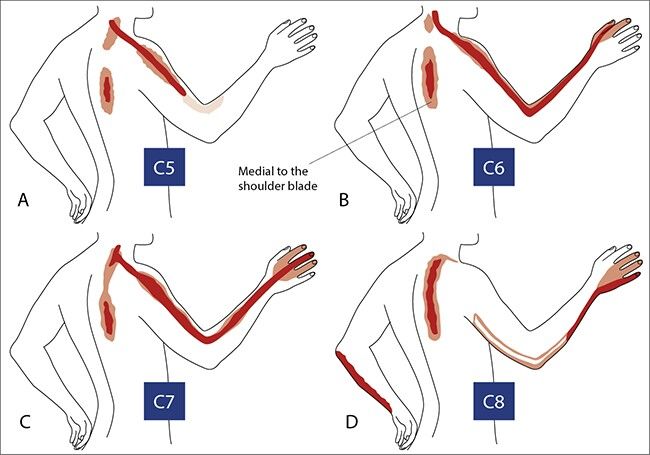
And if it occurs at back level, it is called lumbar disc herniation.
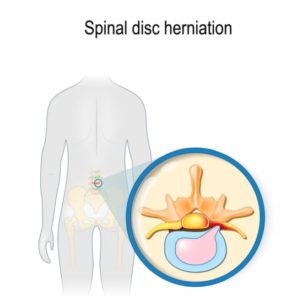
Most of the people think that in all cases the only reliable treatment for herniated disc is surgery but that is wrong.
Surgery is only indicated in severe cases and most of the disc herniation can be successfully rehabbed without surgery.
- Did you know that based on professional comprehensive assessment and on what you as the individual needs to work on, most of the disc herniation can be successfully rehabbed without surgery?
Keep reading…
This laser sharp customised and holistic approach helps you to successfully get out of cervical and lower back pain.
Has someone also recommended you a surgery for your disc herniation problem?
Worry not.
After suffering from excruciating 2 herniated discs and severe back pain for over 20 years this is what Franco said about the back rehab results he achieved:
“I’ve had no flare-ups since training with Jazz. I have no more dullness or low level of constant pain on my back. I can move freely without thinking about movement. I can play with my son without fear of injuring myself. I am stronger, faster and better.
I now know there is a safe and healthy way towards a flexible and strong body and back pain-free if you suffered from a back injury.
I enjoyed training with Jazz because he is not sessions based but, results orientated.”
Explore the non-surgical options for managing disc herniation by booking a FREE ONLINE CONSULTATION now.
How long does it take for herniated disc to heal without surgery?
If there is someone that tells you that all herniated discs heal within ABC number of weeks/months, you better not listen to them, since herniated disc recovery time varies from individual to individual. (3)
Herniated disc recovery time
Just like our faces and bodies are different from one another, problems in our bodies are also different.
No two discs’ herniation is same and that’s why the recovery time for herniated disc is also different.
The recovery time varies from 4-6 weeks to 6 months.
Herniated disc healing time
You should not be asking the question
“What is herniated disc healing time?”
- The question here should be “How long will it take to get my pain relieved arising from herniated disc?”
Research shows that the minimum time it takes to get pain relief varies from 4 to 8 weeks but may take more or less than that depending upon the patient’s condition.
The level of your spine segment involved, the degree of disc herniation and the back rehab specialist you will be working with, all of the factors combined determines the time for herniated disc healing.
Herniated disc lower back treatment
The treatment for herniated disc is not just limited to surgery and this is why this customised disc rehabilitation programme will help in your recovery.
One person may feel better within just 2 to 4 weeks while another person may require at least 3 to 6 months to bulletproof and help to heal a herniated disc.
And…
Depending on the specialist’s expertise you will work with, the healing of disc is an ongoing process and may take months to years.
But there’s one truth you should know and that truth is that in most of the disc herniation cases
“Spinal discs might also heal themselves without the need of surgery.”
If you are worried about the surgery for your herniated disc, I want you to know that several researches have showed that surgery is not always necessary if you aim to rehab and heal a herniated disc. (4, 5)
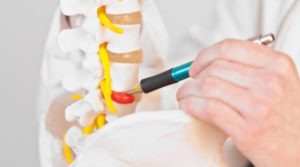 Also…
Also…
This research in 2021 reported a case of 25-year young man with complaints of back pain and soreness due to disc herniation.
His symptoms decreased when managed appropriately without undergoing surgery.
An MRI was performed 2 years later which revealed regression of the disc herniation and the patient also confirmed that there was no recurrence of pain. (6)
Just remember that you are not your MRI reports.
MRI won’t determine your capability to be pain free.
If you are also worried about your back pain or a herniated disc in your lumbar or cervical area and do not want to opt for surgery.
Jazz Alessi, the best long-term injury rehab specialist and an elite personal trainer in London can help you creating for you a laser-sharp customised herniated disc rehabilitation programme.
And do you know the best part?
First consultation to discuss your problems is always FREE.
Book your FREE ONLINE CONSULTATION now.
How to heal a herniated disc naturally?
I am sure that you will be delighted to know that there are certain measures that you adapt to heal your herniated disc naturally.
Yes, you read it right.
Some important precautions and an individualised disc rehabilitation programme can promote natural healing of herniated disc.
Just make sure that before trying any exercises on this page you must obtain clearance from your health professional, here are a few things which may help.
Mckenzie method
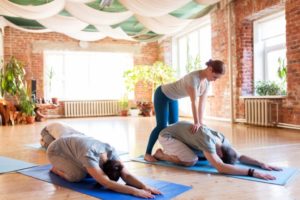
This method was introduced by Robert Mckenzie in 1981 to promote natural healing of herniated disc. (7)
All you have to do is to lie on your stomach and place your palms on the ground just besides your shoulders.
With your body weight supported on your palms, lift your upper body off the ground while arching your neck and back.
Hold this position for few seconds and relax.
Myofascial release
If we look at our bodies’ structures, there’s skin all around our body.
Under this skin, there is a type of tissue that separates your skin and muscles.
This tissue is called Fascia.
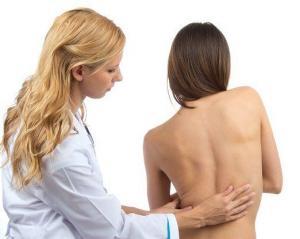 Fascia together with your muscles (Myofascia) can get tight and cause pain in your body.
Fascia together with your muscles (Myofascia) can get tight and cause pain in your body.
Myofascial release performed by a trained person can help in relieving the pain.
Heat and cold therapy
We all know that if we apply warmth to our painful body part, our pain is relieved to some extent.
Heat therapy can also be used to address pain due to herniated disc as it relaxes the tense muscles.
One other thing that might help in relieving pain is applying cold to the painful area either in the form of an icepack or crushed ice.
Cold therapy blocks painful signals and hence pain is relieved to some extent. (8)
How to sleep with herniated disc?
Sleeping with sharp back pain is always tough.
If the cause of your pain is disc herniation, you should pay proper attention to your sleeping positions as sleeping posture can have some effects over herniated disc healing.
Having a disc herniation at either cervical (neck) or lumbar (back) level does not mean that you cannot sleep without pain.
You can surely sleep well if you know the right positions.
The basic principle behind every suitable sleeping position is that we are trying to put as less pressure as possible over the healing herniated disc.
Try these tips for a sleep with minimal amount of pain recommended by Jazz Alessi, the best elite personal trainer in London.
Medium soft surface
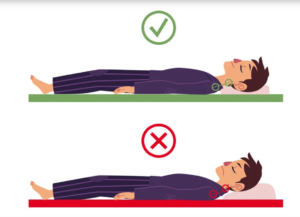
Try sleeping on your back on a medium soft surface.
The surface should neither be too hard or too soft.
The surface on which you sleep has effects on your neck and back arch and that’s why you should choose your sleeping surface wisely.
Fetal position
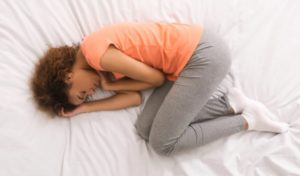
Assuming a fetal position can help in peaceful sleep if you have herniated disc.
All you have to do is to curl up your body in a fetal position.
Lie on your side with your knees tucked into your chest.
Do not forget to use a pillow under your head and neck for support.
Sleeping on your stomach
Sleeping on the stomach is not usually recommended in herniated disc patients as this puts stress over the curve of your spine.
But if you want to sleep on your stomach, you should place pillows under your belly and hips.
Pillow between your knees
If you like to sleep on your side, place a pillow between your knees as this helps to relieve stress on your spine in a side-lying position.
You can also place a pillow under your hip for extra support.
Use single pillow
- Avoid sleeping with using extra pillows under your neck as this causes your neck to bend excessively.
One pillow of normal height is enough.
 Are you tired of following precautions for your herniated disc which does not seems to work?
Are you tired of following precautions for your herniated disc which does not seems to work?
Why not apply for this laser-sharp customised disc rehabilitation programme that can help you re-train your body to eliminate the pain and fears in just a few weeks?
Learn more what will work in your particular case by booking this FREE ONLINE CONSULTATION now.
How to sit comfortably with a herniated disc?
We spend majority of our time in sitting position due to our job demands and that’s why this area also needs your focus.
As disc herniation can worsen if your spine vertebrae are further loaded, you must know positions that put minimal stress over your spinal discs and what you must do in your particular case to help promote herniated disc healing.
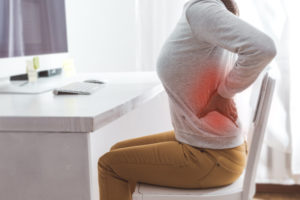 Here are some special tips for you to sit comfortably with herniated disc.
Here are some special tips for you to sit comfortably with herniated disc.
Avoid crossing your legs
Avoid sitting with crossed legs especially if you have disc herniation at your lumbar (back) level.
Try to sit with both feet placed on the ground.
Make sure that your knees are at the level of your hips.
Don’t lean to one side
Avoid leaning to one side while sitting in a chair (or standing) as this puts stress over one side of your spine.
Leaning for few minutes may not do much damage but if it becomes a habit, it surely gets problematic.
Don’t lean forwards for prolonged time
Avoid leaning forward while you are sitting.
As you lean forward, front part of your spinal disc comes under severe stress and this can affect healing of herniated disc.
If repeated several times, this can aggravate existing condition.
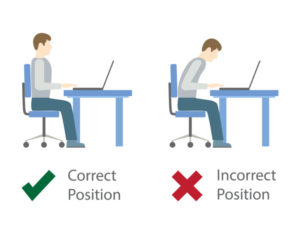 Here are some other tips that will surely benefit you.
Here are some other tips that will surely benefit you.
- Keep your shoulders upright and backwards and avoid bending your neck excessively.
- Place a back support in between your back and chair.
If you do not have a back support, use a rolled towel for this purpose.
- Avoid sitting for prolonged time.
Take regular breaks after about every 1-2 hours and perform gentle stretches of upper and lower body.
- Do you have problems with sitting due to unbearable lower back pain?
- Is your daily life getting disturbed again and again due to the recurring disc herniation pain?
Why not get customised solutions for your body by booking a FREE ONLINE CONSULTATION now.
Activities to avoid with herniated disc
There is an important aspect that you should know if you are dealing with disc herniation problem and want to heal a herniated disc.
“The fewer loads you place over your herniated disc, the sooner it will heal.”
If you find it difficult to understand, think about a bone of an arm that is fractured.
Will it heal if a person continues to move their arm?
Obviously not.
Same thing happens with the herniated disc if you continue to load or overload it.
The guiding principle to herniated disc pain relief lies in knowing the activities to avoid for faster healing.
Though we cannot completely offload the herniated disc but we can surely avoid those activities that put extra stress over the herniated disc.
Vigorous movements
Rapid and vigorous movements are not recommended during early stages of healing and you must be very careful about that.
If you care about your body, you must avoid high impact activities such as jumping and sprinting while your herniated disc is in healing phase.
Sitting for prolonged hours
Here are some common activities that you must avoid if you want your herniated disc to heal rapidly.
Lifting using proper biomechanics
While lifting heavy objects from the ground, do not lean over your back.
Bend your knees slightly, lower your body towards the ground and then lift the objects.
 Move properly
Move properly
Avoid combining rotation motion of your body together with bending as this puts considerable amount of stress over the spinal discs.
If you need to rotate your body, do it slowly in a controlled manner.
Recognize warning signs
Avoid any type of activity that causes sharp shooting pain travelling from your back-to-back of the thigh.
This is a warning sign that your movement pattern is stressing the spinal disc.
Are you also struggling with herniated disc problems and need certainty and a quick fix?
Try London’s most successful laser sharp customised disc rehab programme by Jazz Alessi that has benefited many individuals like you.
Click here to book your FREE ONLINE CONSULTATION now.
Need Help? Join our Herniated Disc Exercise Program
Based on the knowledge you have gained so far; one thing is clear that there are several factors that affect herniated disc healing either in a good way or bad way.
Some useful tips such as sleeping and sitting positions together with knowledge of the activities to avoid help in offloading the healing spinal discs.
The most important factor that helps in faster healing of herniated disc is an assessment based (evidence based), progressive (safe) and customised herniated disc rehabilitation programme.
A rehabilitation programme tailored according to the individual’s condition, your challenges, goals and body needs.
Do you know what does rehabilitation mean?
- Rehabilitation means getting back successfully to activities you love by a variety of measures such as bespoke rehab exercises, one-to-one training, education, and ultimately knowledge transfer etc, so, you can carry on maintaining your best on your own.
This rehabilitation programmes leaves no stone unturned and is carefully designed to bring the individual back to their normal life and activities.
They help you to eliminate postural problems, muscles and joints imbalances, compensatory mechanisms, pain and fear etc, and increase confidence during moving the body.
Here’s what Michaela M has to say regarding her disc injury rehabilitation programme.
“Jazz created a tailored back injury rehab programme and agreed sessions to fit my current abilities, to adhere to my injury rehab requirements and he adjusted as needed after every session. My rehabilitation has been very successful and now I can take my spinal rotations either to my 99% potential or get at least 70% further than I was able to after the injury.”
Who does not want to move freely without worrying about the pain?
If there’s someone in the UK that wishes so, I’m sure that you are not that person.
Yeah, I know that.
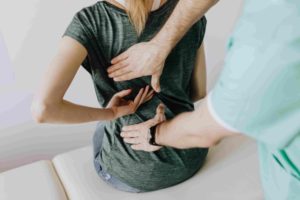 This herniated disc treatment UK has been blessed with does not match with other countries as our disc rehabilitation programmes are totally customised.
This herniated disc treatment UK has been blessed with does not match with other countries as our disc rehabilitation programmes are totally customised.
We believe that each of our clients is unique and need a unique programme.
I’m sure that you agree with our point of view.
Don’t you?
So, what’s stopping you from returning to the pain free life?
Fear?
Lack of confidence?
Uncertainty?
Why not deal with all of these problems in one go and that too for FREE?
Yes, you read it right.
You can clear all your doubts and queries by booking a FREE ONLINE CONSULTATION with Jazz Alessi.
Then, let’s meet in person or via a video call.
See you there.
REFERENCES
- Kisner C, Colby LA, Borstad J. Therapeutic exercise: foundations and techniques: Fa Davis; 2017.
https://books.google.com.pk/books?hl=en&lr=&id=yZc6DwAAQBAJ&oi=fnd&pg=PR1&dq=1.%09Kisner+C,+Colby+LA,+Borstad+J.+Therapeutic+exercise:+foundations+and+techniques:+Fa+Davis%3B+2017.&ots=Nft6B_iDXg&sig=HpgROaQ-Ncp6OrJkEF2o4pFJT8Q&redir_esc=y
- Snell RS. Clinical neuroanatomy: Lippincott Williams & Wilkins; 2010.
https://books.google.com.pk/books?hl=en&lr=&id=ABPmvroyrD0C&oi=fnd&pg=PA1&dq=2.%09Snell+RS.+Clinical+neuroanatomy:+Lippincott+Williams+%26+Wilkins%3B+2010.&ots=q9lmiOrGoK&sig=tYSd3jo7ze3zcWF1PMIV7L3nJUs&redir_esc=y#v=onepage&q=2.%09Snell%20RS.%20Clinical%20neuroanatomy%3A%20Lippincott%20Williams%20%26%20Wilkins%3B%202010.&f=false
- Benoist M. The natural history of lumbar disc herniation and radiculopathy. Joint Bone Spine. 2002;69(2):155-60.
https://www.sciencedirect.com/science/article/abs/pii/S1297319X02003858
- Altun I, Yüksel KZ. Lumbar herniated disc: spontaneous regression. The Korean Journal of Pain. 2017;30(1):44.
https://www.ncbi.nlm.nih.gov/pmc/articles/PMC5256262/
- Kaliya-Perumal A-K, Oh JY-L. Spontaneous Total Resolution of Severe Lumbar Disc Herniation. Chonnam Medical Journal. 2020;56(1):77-8.
https://www.ncbi.nlm.nih.gov/pmc/articles/PMC5256262/
- Wang R, Luo H. Regression of lumbar disc herniation with non-surgical treatment: a case report. Journal of International Medical Research. 2021;49(6):03000605211020636.
https://journals.sagepub.com/doi/full/10.1177/03000605211020636
- Lisi AJ. Overview of the McKenzie method. Positional Release Techniques with on-line videos E-Book. 2015:205.
https://books.google.com.pk/books?hl=en&lr=&id=RStVCwAAQBAJ&oi=fnd&pg=PA205&dq=mckenzie+method+herniated+disc&ots=CQ8Iv_D9mF&sig=nukmhpGsp4AbbFqHi8igVss1dkM&redir_esc=y#v=onepage&q=mckenzie%20method%20herniated%20disc&f=false
- Nadler SF, Weingand K, Kruse RJ. The physiologic basis and clinical applications of cryotherapy and thermotherapy for the pain practitioner. Pain physician. 2004;7(3):395-400.
https://pubmed.ncbi.nlm.nih.gov/16858479/



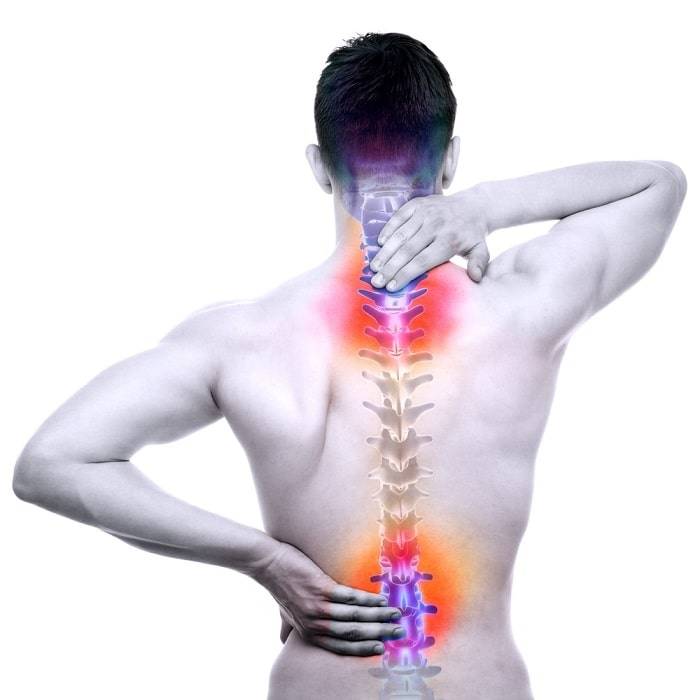
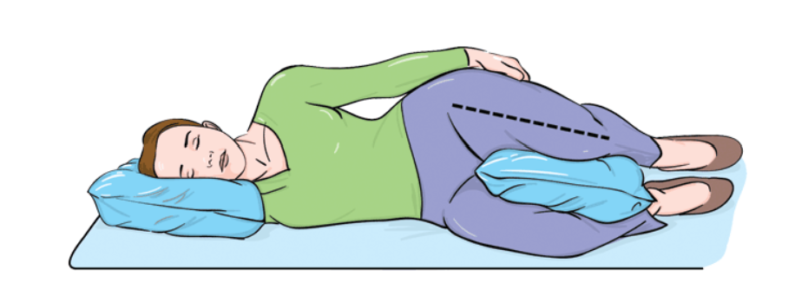
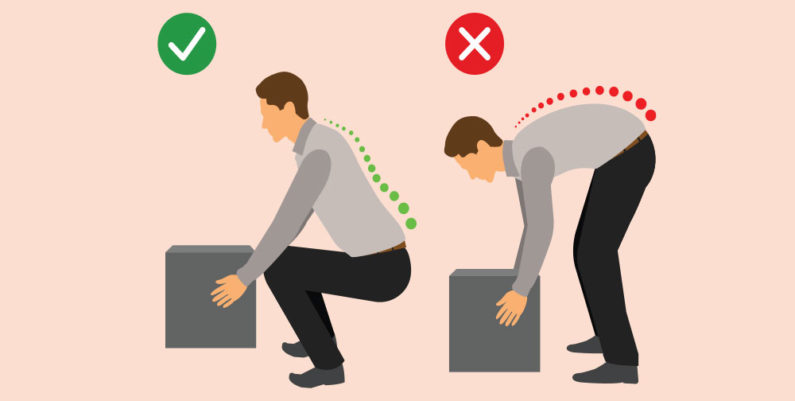 Move properly
Move properly